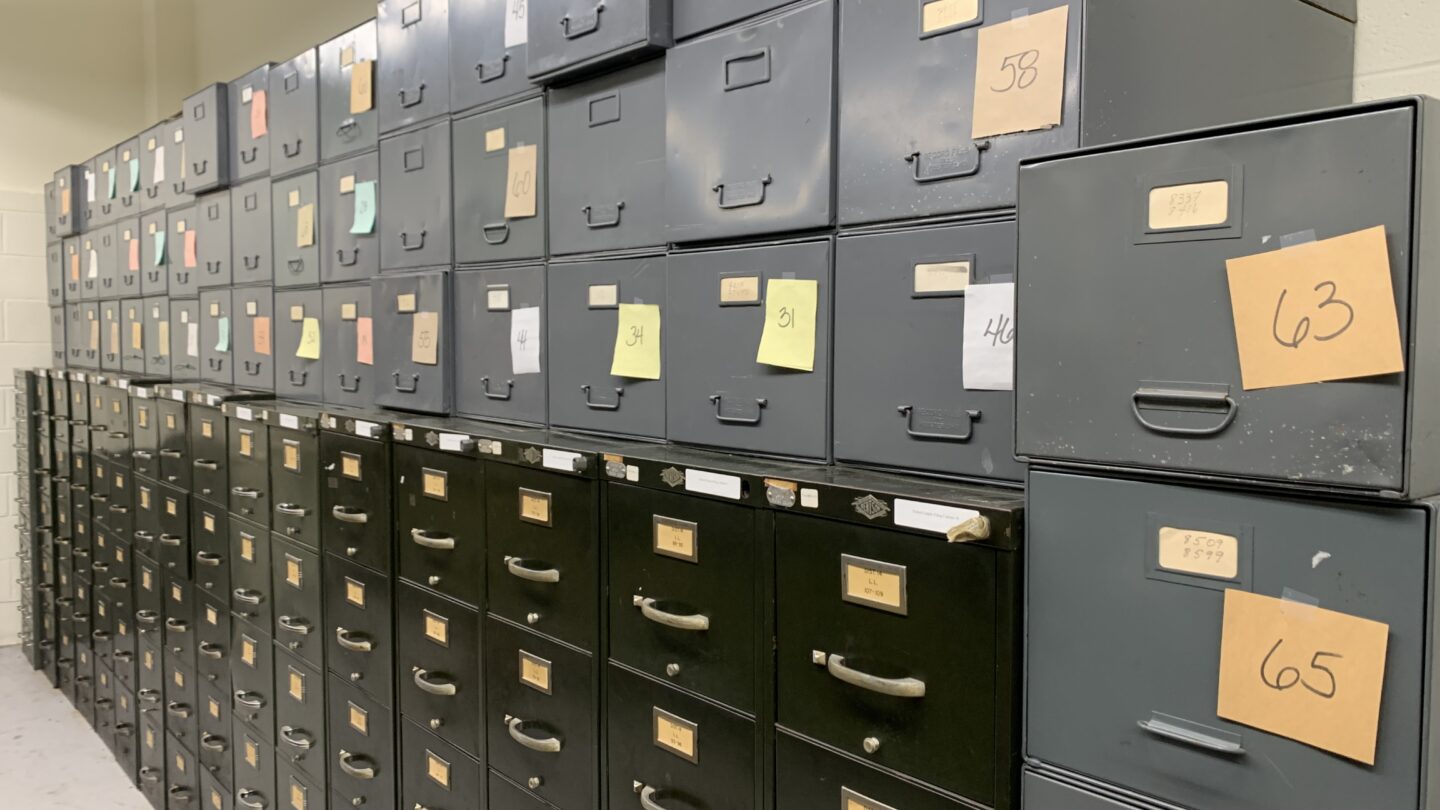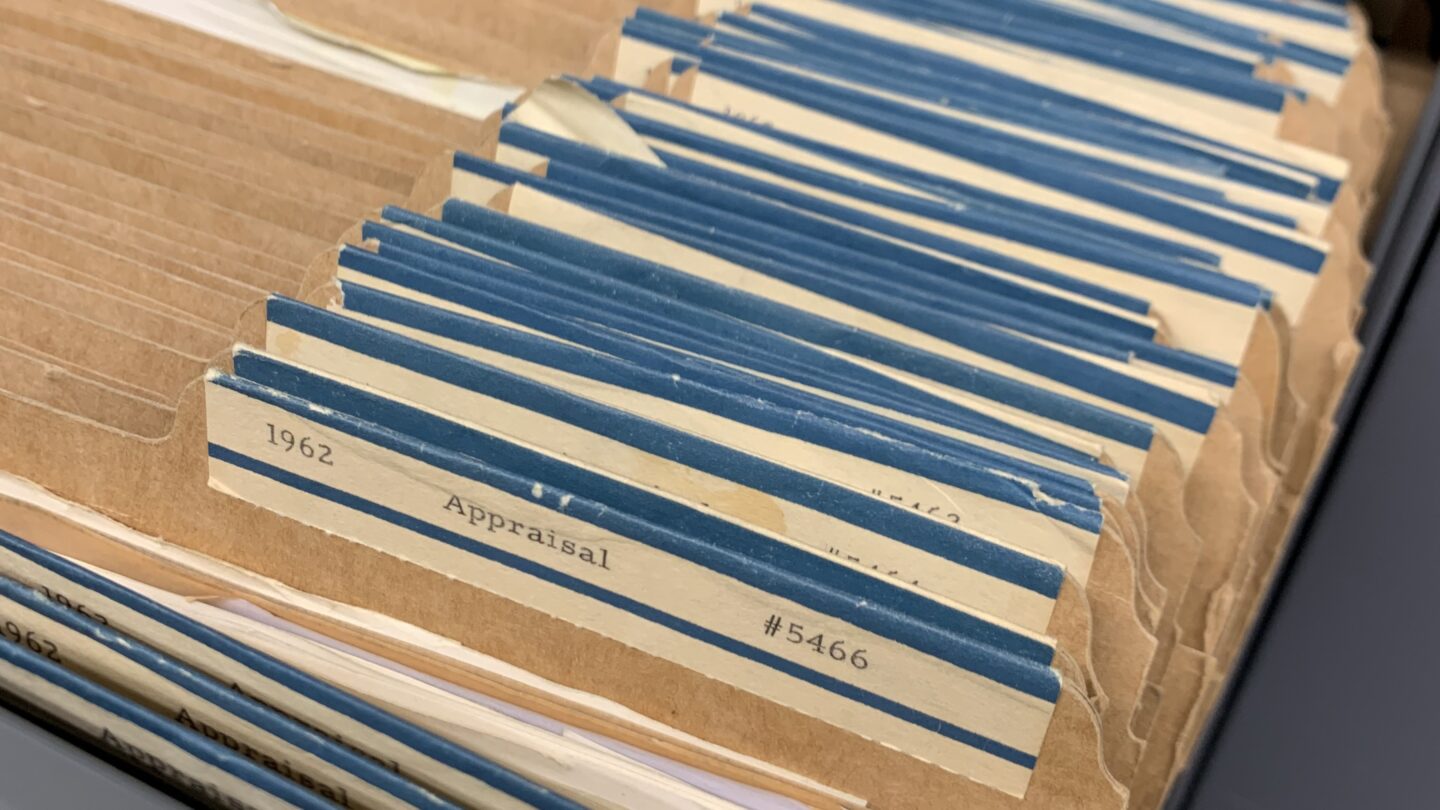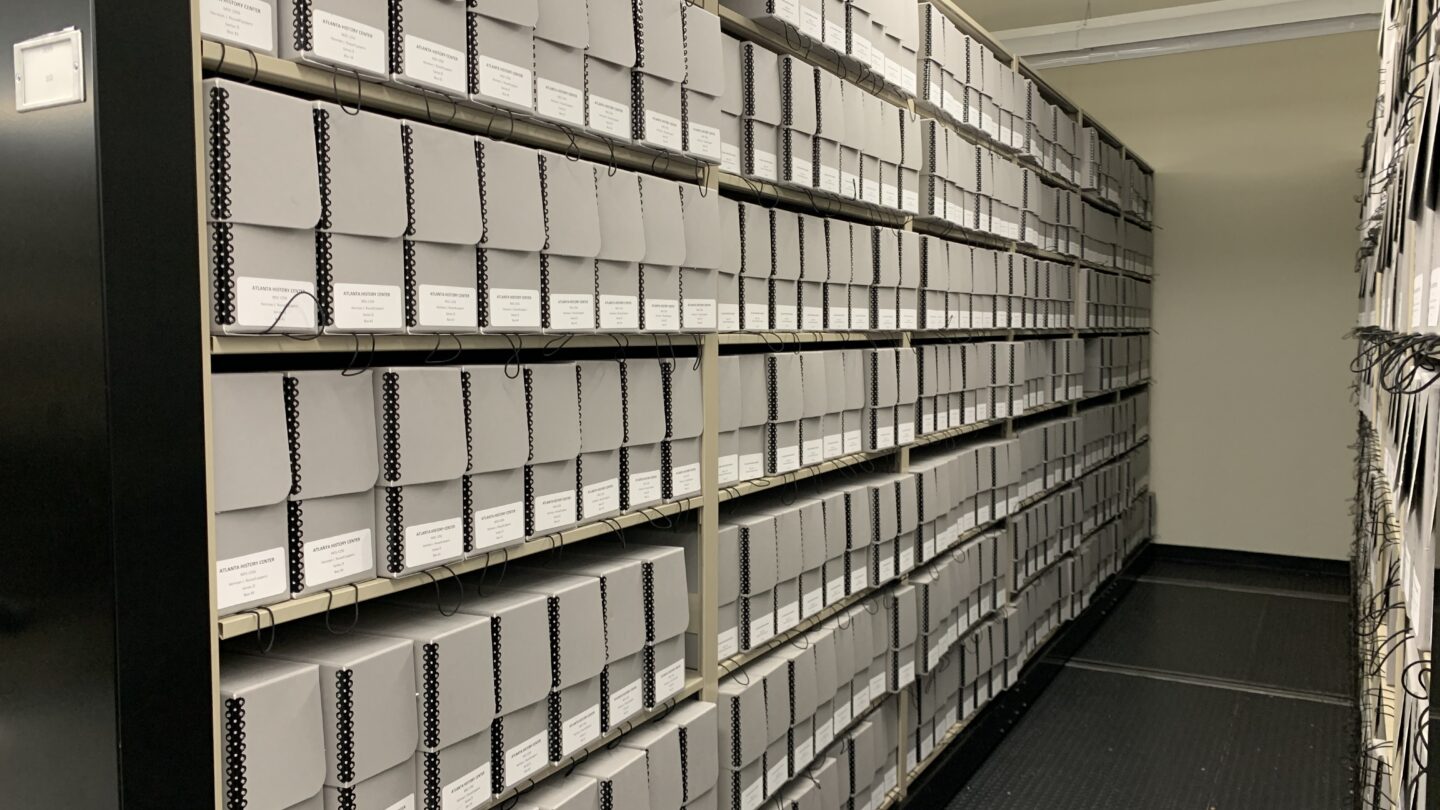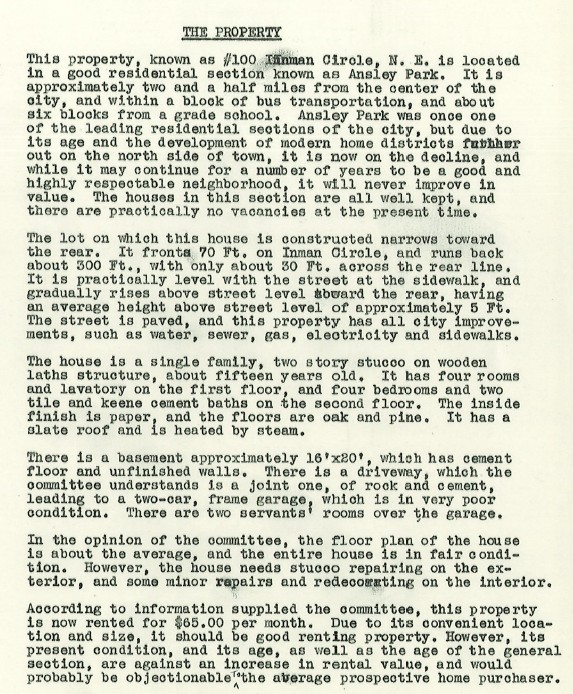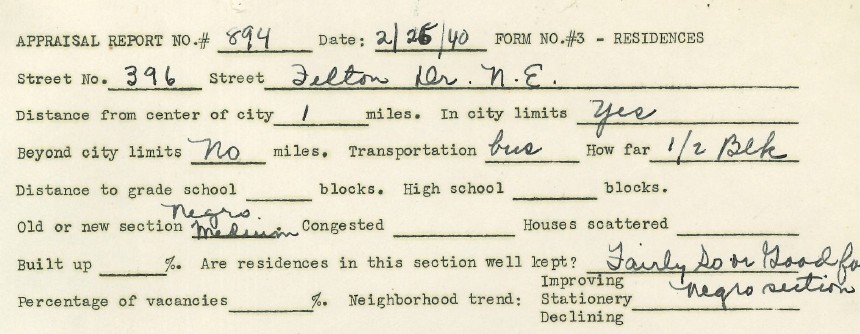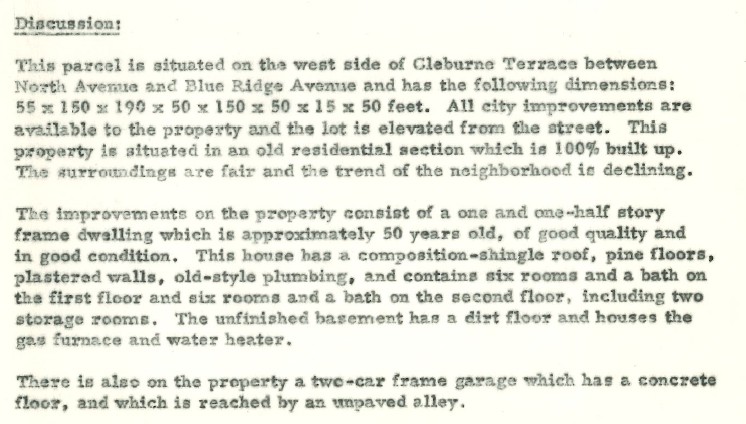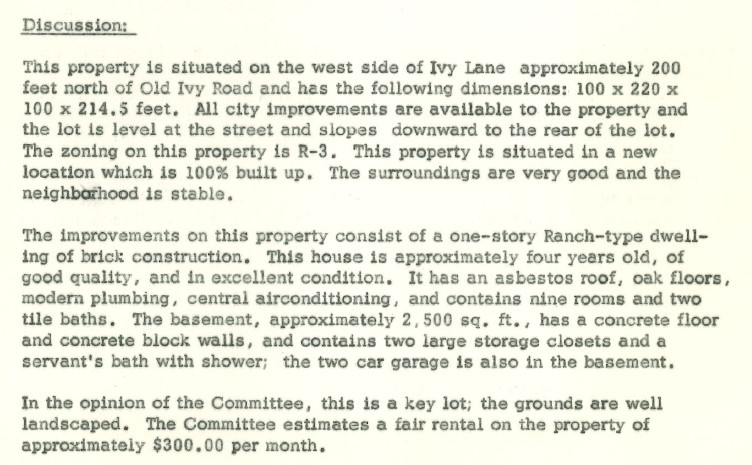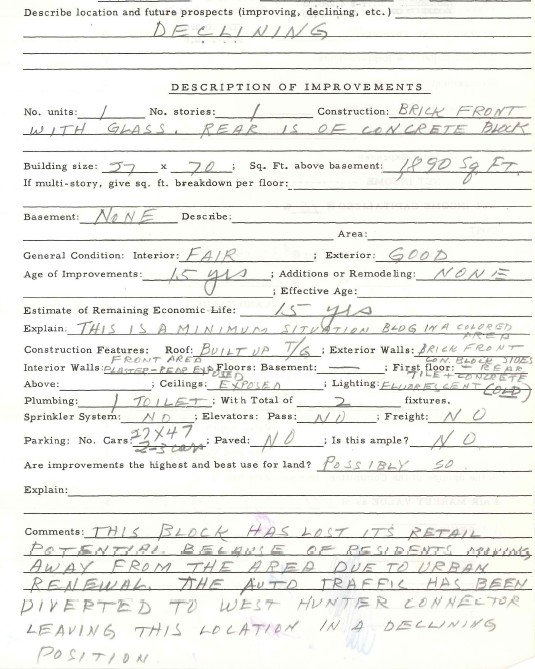Available December 2025
Kenan Research Center is working processing the Atlanta Real Estate Board Appraisals as part of the National Historic Publications and Records Commission (NHPRC) grant. The processed collection will be available to researchers in the Kenan Research Center in December 2025 and will be the final collection processed as part of the NHPRC grant.
Eight Atlanta Realtors founded the Atlanta Real Estate Board in 1910, and a year later it was accepted into the National Association of Real Estate Boards. The board has provided members with programs and services, communication and outreach, and advocacy and influence initiatives. In addition, the board has helped pass zoning laws, working alongside Atlanta government agencies on issues regarding city planning. Through its 100+ year history, it has represented the business community in local civic affairs, including through representatives to the Atlanta Aldermanic Board, City Zoning Boards, the Mayor’s Committee on Urban Renewal, the office of Vice-Mayor, the Mayor, County Commissions, and the Atlanta Housing Authority. In 1988 the board split into the Atlanta Board of Realtors, Inc, the Atlanta Society of Commercial Realtors, Inc, and the Atlanta Society of Residential Realtors, Inc.
Atlanta Real Estate Board created over 10,000 real estate appraisals between 1924 and 1983, thousands of which document homes and buildings in historically Black neighborhoods that are typically not included in other resources such as the Sanborn Fire Insurance Maps.
To process the collection, Processing Archivist Mariah Isbell has been evaluating the scope of the collection and organizing it based on the properties’ districts and land lots. Unlike the previous records processed under the NHPRC grant, the appraisals do not need a thorough arrangement plan, and because of that we wanted to focus more on the descriptive aspect of them. The appraisals will maintain their numerical order and to increase accessibility, their folder titles will include the addresses of the properties being appraised, as well as their district and land lot. Many of the appraisals are of private properties, and the inclusion of their addresses will make them searchable within the finding aid. However, not every address will be searchable in the traditional format of number and street, as some addresses are the street name only. At the final stage, Mariah will have transferred the materials from their previous housing in metal cabinets, where accessing the materials was difficult, to archival boxes meticulously labeled based off the collection’s finding aid. By doing so, the collection will be readily accessible to patrons wishing to do property and land use research.
These records are included because buildings represented in the collection were predominantly owned by white landlords and rented to people of color, or lower-class white people. The collection fills numerous gaps that have been frustrating for researchers because there are few processed records, and even fewer photos, that cover these spaces.
Appraisals document the monetary worth of property throughout metro Atlanta which includes land lots, residences, and businesses; financial assessments usually include reasoning and research, as well as blueprints, photographs, description of the property, and comparable market data. Because they document numerous Atlanta neighborhoods over sixty decades, they offer insight into the worth of land in different areas during years of rapid expansion. Therefore, not only could researchers learn about specific homes and neighborhoods, but they could also compare land worth in predominantly Black neighborhoods with that in predominantly white neighborhoods.
In the final descriptive summary of many appraisals the property being valued is often categorized as either stable, improving, or declining. Although extract reasoning on why a property is stable versus declining is not always stated, it is often due to the area being upkept, having functional city plumbing, and the surrounding properties being in good condition. Many of the appraisal forms also use coded language, such as “urban renewal” and references to “rather poor.” See below for examples:
- Appraisal 894: The appraisal for a property in the Old Fourth Ward neighborhood refers to residences kept “fairly so or good for negro section,” using race as a factor in determining the monetary worth of white versus Black areas in Atlanta.
- Appraisal 725: This Inman Circle property is labeled as being in a “good residential section.” However, “Ansley Park was once one of the leading residential sections of the city, but due to its age and the development of modern home districts further out on the north side of town, it is now in the decline, and while it may continue for a number of years to be a good and highly respectable neighborhood, it will never improve in value.” “…it’s present condition, and its age, as well as the age of the general section, are against an increase in rental value, and would probably be objectionable to the average prospective home purchaser.”
- Appraisal 4161: “This property is situated in an old residential section which is 100% built up. The surroundings are fair and the trend of the neighborhood is declining.” We can compare this to appraisal 4170: “This property is situated in a new location which is 100% built up. The surroundings are very good and the neighborhood is stable.”
- Appraisal 6366: This property on Mitchell Street, which would later become the site of the Mercedes Benz Stadium, is referred to as “declining” and the “block has lost its retail potential because of residents moving away from the area due to urban renewal.”
Please visit the Atlanta History Center’s NHPRC landing page for more information about the project, finding aids for processed collections, and recorded webinars, all created in fulfillment of the NHPRC grant. We will be hosting a final webinar about the project and how these processed collections can fill gaps in historic property and neighborhood research in September 2025.



